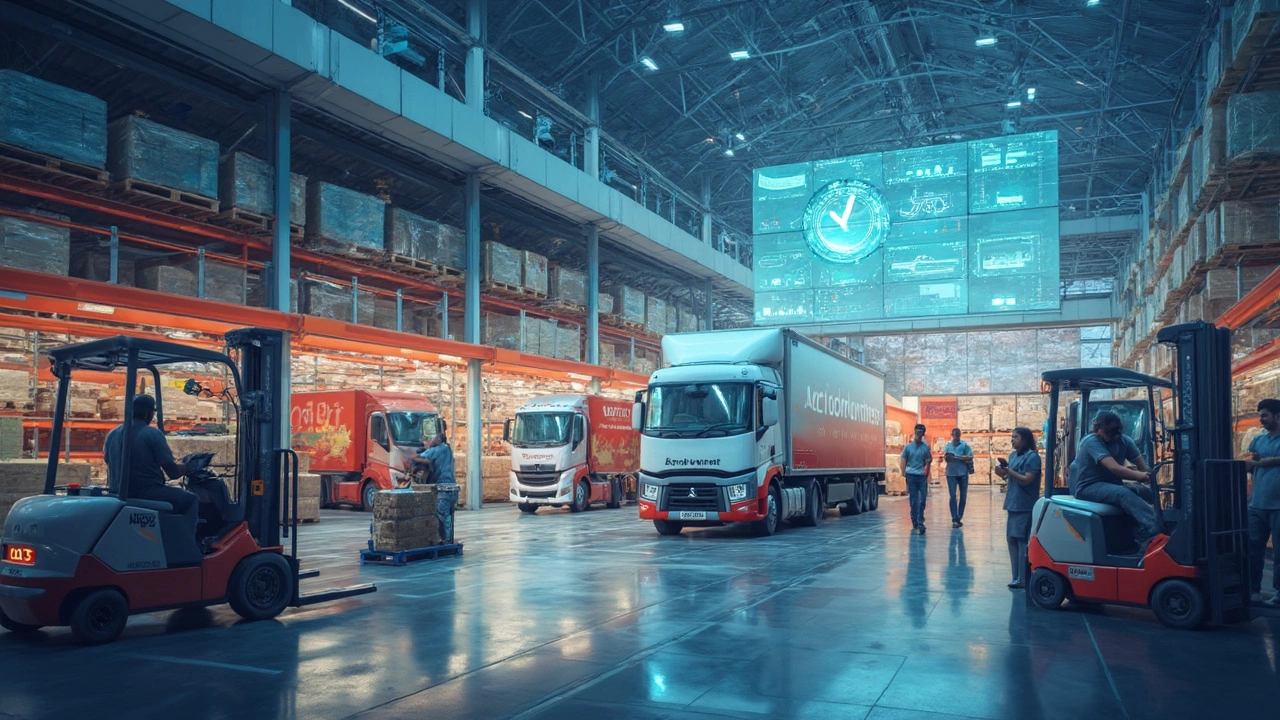Delivery Automation: How Smart Tech Is Changing Same‑Day Shipping
Ever wondered why some parcels arrive in hours while others take days? The secret is delivery automation. It’s not sci‑fi; it’s a set of tools that help couriers plan routes, track packages, and even load vans without a human typing every detail. When you use automation, you cut idle time, avoid mistakes, and keep customers happy.
Why Automation Matters for Couriers
First off, route optimisation saves fuel and time. An algorithm looks at traffic, weather, and delivery windows, then spits out the most efficient path. Drivers follow a GPS that updates in real‑time, so they never waste minutes cruising in a jam. The result? More stops per shift and lower costs per parcel.
Second, real‑time tracking builds trust. When a package is scanned at each checkpoint, the system updates the customer instantly. No more “your order is in transit” vague messages. People can see exactly where their box is, which reduces support calls and bad reviews.
Third, automated dispatching means no one is stuck on the phone assigning jobs. The software matches orders with the nearest available driver, taking into account vehicle size, load capacity, and special handling needs. This speeds up the hand‑off from warehouse to road.
Easy Steps to Start Automating Your Delivery Process
1. Map Your Current Workflow. Write down every step from order receipt to final drop‑off. Identify where you manually enter data or make decisions. Those are the low‑hanging fruit for automation.
2. Choose a Cloud‑Based Platform. Look for a system that offers route planning, driver app, and API access to your order software. Popular options integrate with popular e‑commerce carts, so you don’t have to build a custom bridge.
3. Equip Drivers with Mobile Devices. A simple smartphone app can replace paper slips. The app records scans, captures signatures, and sends location data back to the hub.
4. Set Up Automated Alerts. Configure the system to email or text customers at key moments – when the parcel leaves the warehouse, when it’s on the final mile, and when it’s delivered. This keeps everyone in the loop without extra work.
5. Review Data Weekly. The software provides metrics like average delivery time, missed windows, and fuel usage. Use those numbers to tweak routes, re‑assign drivers, or adjust staffing levels.
Getting started doesn’t require a massive budget. Many providers offer pay‑as‑you‑go plans, so you can test the system on a handful of routes before rolling it out company‑wide. Once the basics are in place, you can layer on advanced features like AI‑driven demand forecasting or even drone deliveries for ultra‑fast parcels.
Bottom line: delivery automation turns a chaotic, guess‑work process into a predictable, data‑driven operation. It helps same‑day services hit their promises, cuts costs, and keeps customers smiling. If you’re still doing everything by hand, now’s the time to let the software do the heavy lifting.
Logistics Platforms: How Modern Software Transforms Shipping and Delivery
Logistics platforms are the backbone of modern supply chains, helping companies track shipments, manage warehouses, and automate deliveries. This article breaks down what logistics platforms are, why they matter, and how they're changing the way products move from factory to customer. You'll get a real-world look at the features that power these platforms and tips for picking the right one for your business. Understand the latest trends and learn how to avoid costly mistakes. Find out which tools can make your daily operations faster, cheaper, and more reliable.
© 2025. All rights reserved.

